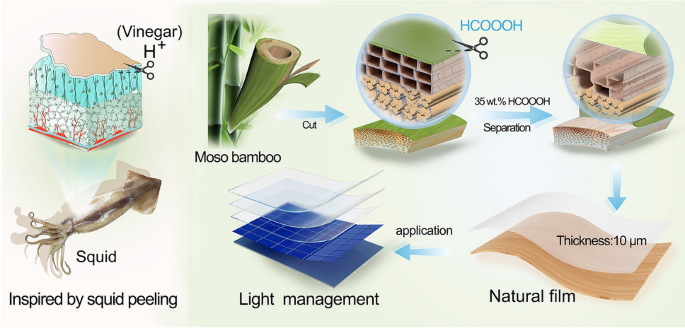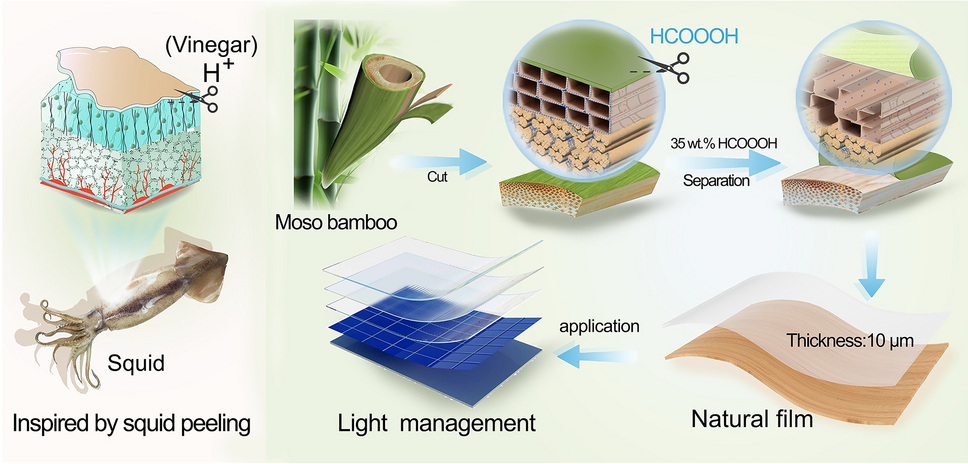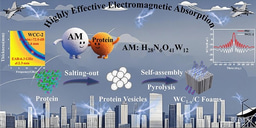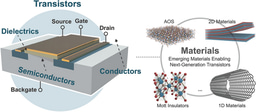Bioinspired Precision Peeling of Ultrathin Bamboo Green Cellulose Frameworks for Light Management in Optoelectronics
Published in Materials

As demand grows for sustainable optical materials, conventional biomass films struggle with opacity and thickness trade-offs. Now, researchers from Central South University of Forestry and Technology, led by Prof. Yingfeng Zuo and Prof. Yiqiang Wu, have developed a bioinspired precision peeling strategy to isolate 10-μm-thick bamboo green frameworks with 88% haze and 80% transparency. This work offers a scalable route to eco-friendly light-management layers for optoelectronics.
Why Bamboo Green Matters
- Ultrathin & Transparent: 100× thinner than wood-based films, achieving high transparency without nanofibrillation.
- Light Scattering: Native cellulose alignment and wax-cellulose interfaces enable strong broadband haze.
- Sustainable Source: Transforms industrial bamboo waste into high-value optical materials.
Innovative Design and Features
- Squid-Inspired Peeling: Peroxyformic acid selectively disrupts parenchyma cell bonds, preserving cellulose structure.
- Monolayer Architecture: Retains native cellulose I crystallinity (64.76%) and uniaxial fibril alignment (Hermans factor: 0.23).
- Mechanical Robustness: 903 MPa modulus with anisotropic strength for durable integration.
Applications and Future Outlook
- Solar Cell Enhancement: Boosts polycrystalline silicon PCE by 0.41% absolute (18.74% → 19.15%), outperforming synthetic coatings.
- Scalable Production: 270 cm2framework per bamboo culm, compatible with standard wafer sizes.
- Circular Economy: Low-energy peeling process aligns with green manufacturing and waste-to-wealth strategies.
This study demonstrates a biomimetic, low-cost pathway to high-performance cellulose optical films, bridging sustainability and functionality for next-generation photovoltaics and optoelectronics
Follow the Topic
-
Nano-Micro Letters

Nano-Micro Letters is a peer-reviewed, international, interdisciplinary and open-access journal that focus on science, experiments, engineering, technologies and applications of nano- or microscale structure and system in physics, chemistry, biology, material science, and pharmacy.






Please sign in or register for FREE
If you are a registered user on Research Communities by Springer Nature, please sign in